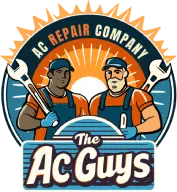Why AC Bills Spike in Summer
It’s not just the temperature rise that makes your AC bill go through the roof—it’s often how your system reacts to it. When summer hits, your air conditioner runs longer and works harder. But the real surprise? Many homeowners overlook key inefficiencies like leaky ductwork, old thermostats, and poor insulation that force their units to overcompensate. Even habits like setting the thermostat too low can quietly inflate costs.
Start Here: Check Your Thermostat Habits
Before investing in anything, take a close look at how you use your thermostat. If you’re constantly adjusting it or keeping it too low all day, that alone could be costing you more than you realize.
The U.S. Department of Energy recommends setting your thermostat to 78°F when you’re home and higher when you’re away. A smart or programmable thermostat can help regulate indoor temps without requiring manual changes. Also, setting your system to “auto” instead of “on” prevents the fan from running constantly.
Read More: Difference types of Smart Thermostats
Seal the Leaks: Stop Wasting Cooled Air
Even if your AC is performing at its best, it won’t matter much if cool air is escaping. Windows, doors, attic hatches, and ducts are common culprits. Drafts and leaks make your system work harder than needed.
Inspect weather stripping and apply caulk where needed. If you haven’t already, consider having a home energy audit to pinpoint air leakage. It’s one of the most cost-effective steps you can take.
Use Fans & Blinds to Your Advantage (Low-Tech, Big Savings)
Ceiling fans don’t lower room temperature, but they do make you feel cooler by circulating air. That allows you to bump the thermostat up a few degrees without sacrificing comfort.
Closing blinds or curtains during the day—especially on south- and west-facing windows—keeps the sun’s heat out. Window films and reflective shades can also reduce solar gain, helping your AC run less frequently.
Read More: Will a Ceiling Fan Improve Air Flow?
Change Filters, Change Everything
Dirty air filters are one of the most common and overlooked reasons for high cooling costs. A clogged filter limits airflow, making your system run longer to reach the set temperature.
Check your filters monthly and replace them at least every 60–90 days. If you have pets or allergies, more frequent changes may be necessary. It’s a small habit that leads to big savings.
Clean Around Your Outdoor Unit (It Really Matters)
Your outdoor AC unit needs breathing room. Over time, grass clippings, leaves, and debris can block airflow and trap heat around the coils, making the unit work harder.
Trim vegetation back at least two feet on all sides. Hose off the fins gently if they’re dusty. Avoid placing objects or covering the unit unless you’re shutting it down for the season.
Read More: If you replace your outdoor unit, do you need to also replace you indoor unit?
Optimize Your Cooling Schedule, Not Just the Thermostat
Cooling your home efficiently isn’t just about temperature—it’s about timing. Avoid using major appliances during peak heat hours, as they add indoor heat and strain your AC.
“Pre-cooling” the house in the early morning or late evening when temperatures are lower can help maintain comfort throughout the day. Smart thermostats can automate this with custom schedules.
Know When It’s Time to Upgrade Your System
If your AC is over 10–15 years old, it may be time to compare your repair costs against the price of a newer, more efficient model. Higher SEER (Seasonal Energy Efficiency Ratio) ratings indicate better energy performance.
Even with proper maintenance, old systems fall behind modern energy standards. Upgrading may involve upfront costs, but utility savings and improved comfort often make it worthwhile within a few seasons.
Read More: Seer and Seer 2 ratings for HVAC Systems
Consider a Professional HVAC Tune-Up Before Summer Peaks
Routine maintenance isn’t just about avoiding breakdowns—it’s about peak efficiency. A certified HVAC technician will clean coils, check refrigerant levels, test airflow, and inspect electrical components.
Annual tune-ups, ideally before peak season, can catch minor issues before they snowball. Many companies offer maintenance plans that help reduce costs in the long run.
Bonus Tips Most Blogs Skip
- Zoning systems: If your home has multiple floors or zones, consider zoning your HVAC system to avoid cooling unused areas.
- Dehumidifiers: In humid climates, using a standalone dehumidifier can help maintain comfort without lowering the thermostat.
- Vent strategy: Contrary to popular belief, closing vents in unused rooms can disrupt airflow and reduce system efficiency. Instead, use dampers or a zoning system.
Final Thoughts: Make a Plan, Not Just a Wish List
Saving money on air conditioning isn’t about cutting corners—it’s about using your system wisely. Start with small, actionable changes like adjusting your thermostat or replacing filters. Then move toward bigger improvements like sealing leaks, using fans strategically, and scheduling regular maintenance.
Even if you don’t make every change today, each step helps lower your bill while keeping your home comfortable all summer long.










